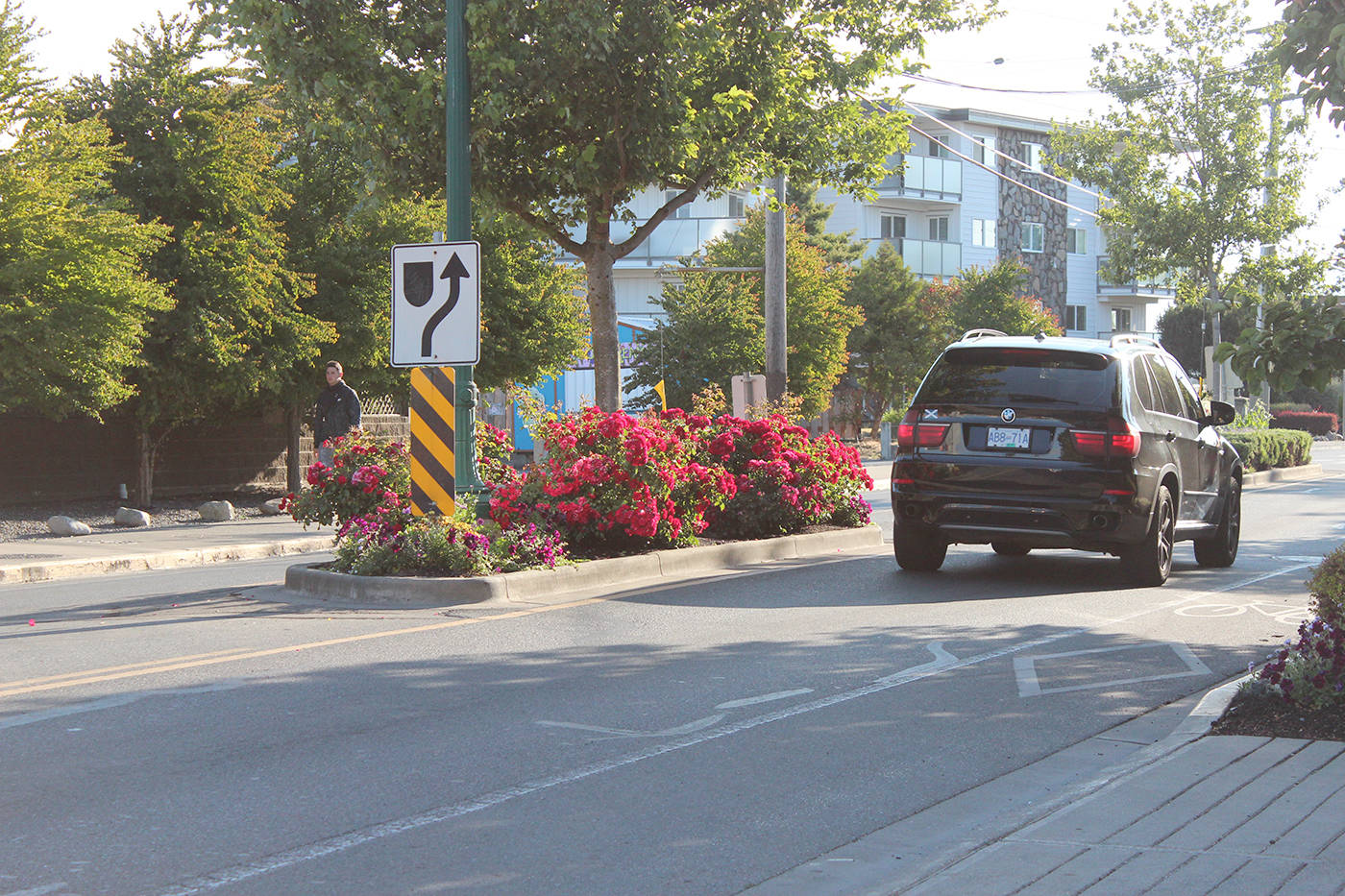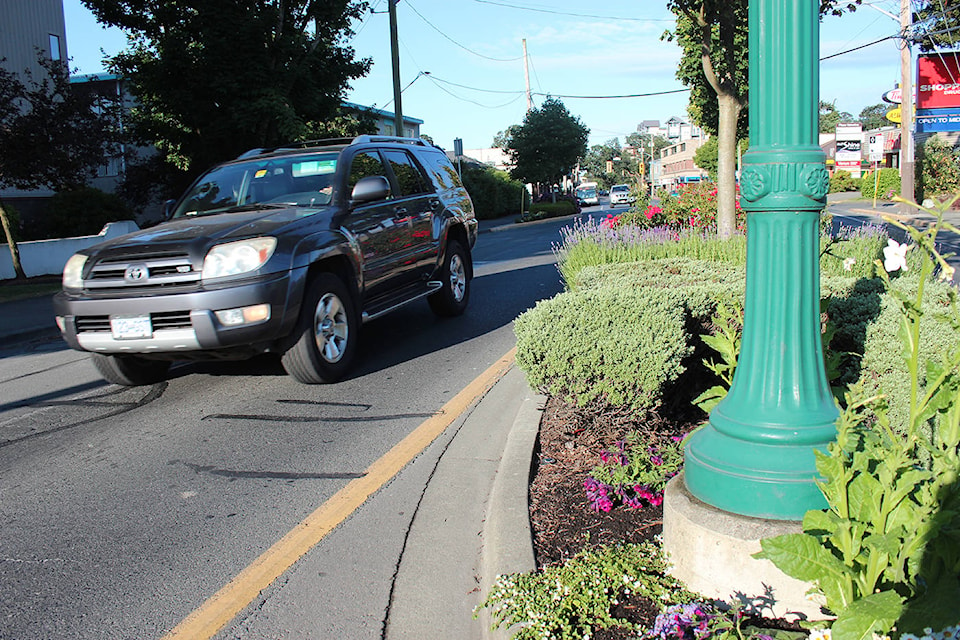The bright, colourful and flowery medians running along Esquimalt Road – a feature the township has become known for – are here to stay.
On Monday, council, sitting as committee of the whole, toyed with the idea of removing 10 medians in the downtown from Admirals Road to Lampson Street and three in the Head Street commercial area. The removal would be gradual and take place with the redevelopment of adjacent land.
“There’s tremendous pressure, lots of contested use. It’s obviously a roadway, it’s got bike lanes on part of it, on-street parking on part of it, power lines,” said Bill Brown, director of development services with the township, during the meeting. “There’s a lot of demand for a very limited space.”
Among the pros stated in a staff report, medians create a pedestrian safety zone in the middle of the street at a crosswalk, prevent head-on vehicle collisions, allow drivers to make safe left-hand turns when no designated lane is available, and calm traffic.
But there are also cons. Medians encourage jaywalking and can block a driver’s sight lines, creating a potential hazard for pedestrians on nearby crosswalks.
Staff research also found that removing medians would allow for wider sidewalks and potentially create more room for bike lanes in commercial areas, as well as for transit shelters and public art in boulevard areas. Removal would also reduce injuries caused by vehicles hitting the medians.
After discussion, council decided the benefits outweighed the disadvantages.
“Everyone compliments Esquimalt for their medians. As much as we had a lot of fights about medians on Admirals [Road] in the past … it would send a really weird message to the public to take them out at this point,” said Mayor Barb Desjardins.
Some councillors expressed interest in taking hydro poles off sidewalks as a way to potentially reduce congestion.
The report was brought forward as part of the Esquimalt Road Urban Design guidelines, which aim to improve the functionality and beautification of sidewalks, building setbacks and location of boulevards. The guidelines are expected to be completed by this fall.




